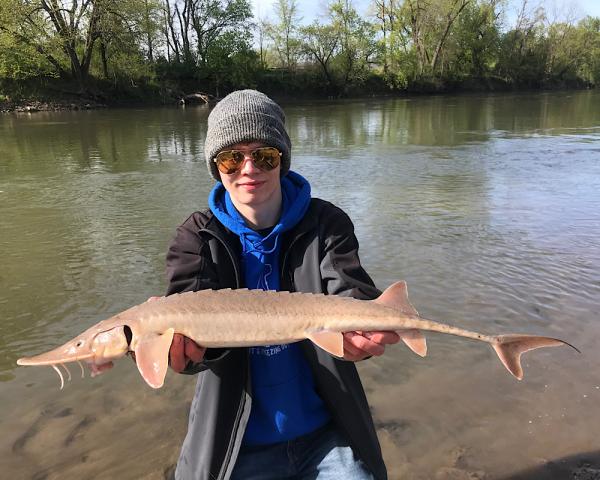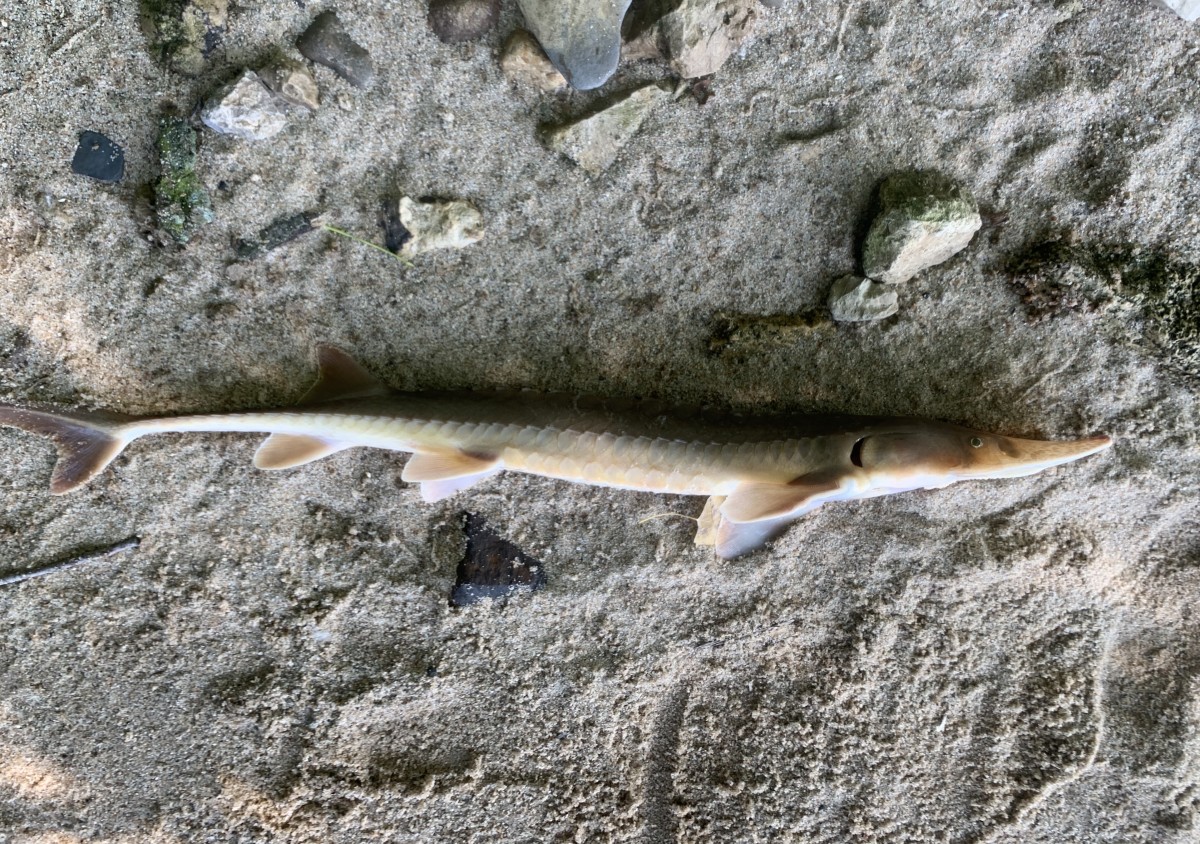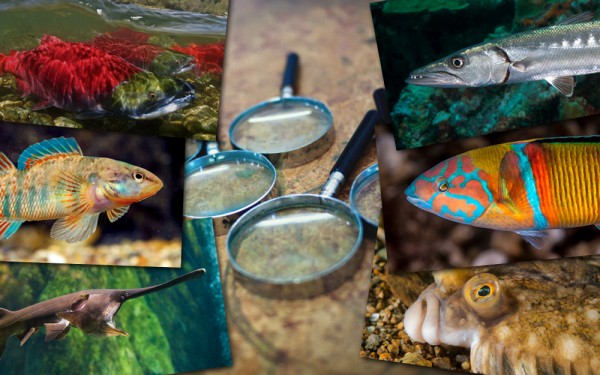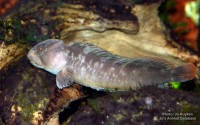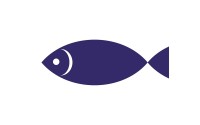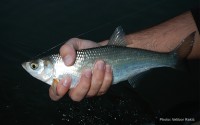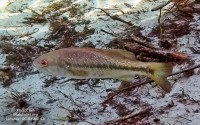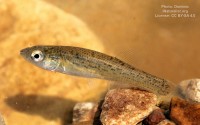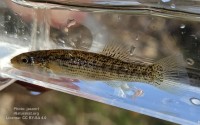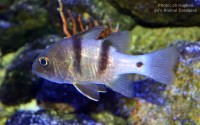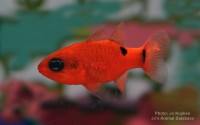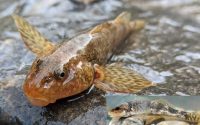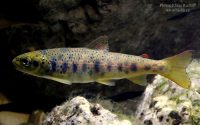Shovelnose sturgeon
(Scaphirhynchus platorynchus)
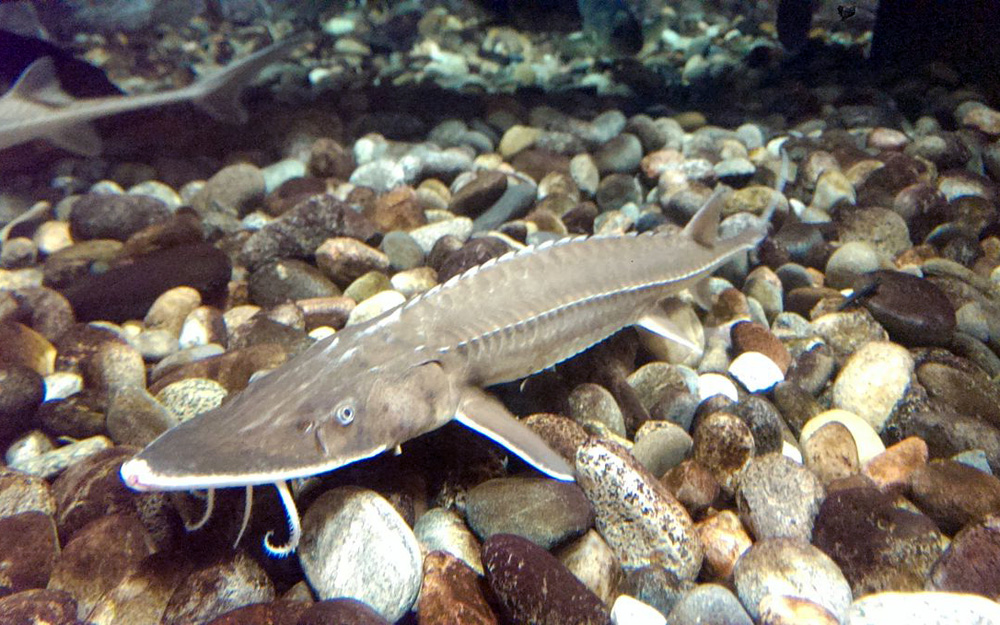
Classification
General data
The shovelnose sturgeon (Scaphirhynchus platorynchus) is the smallest species of freshwater sturgeon native to North America. It is often called hackleback, sand sturgeon, or switchtail. Switchtail refers to the long filament found on the upper lobe of the caudal fin (often broken off as adults). Shovelnose sturgeon are the most abundant sturgeon, found in the Missouri River and Mississippi River systems, and the only commercially fished sturgeon in the United States of America (Pflieger 1997).
Description
The sturgeons of the family Acipenseridae have bony scutes along the sides and back and four barbels on the underside of the rostrum. A total of 25 extant species of sturgeon are recognized, including 17 within the genus Acipenser. Sturgeon are distributed around the northern part of the Northern Hemisphere (holarctic distribution) and have marine, freshwater, and anadromous members. Sturgeons, including the shovelnose, are highly regarded for their flesh and their roe, from which premium grades of caviar are made (Barton 2007).
They can reach 1m (39.4 in) in length and up to 4.8 kg (10.6 lb) in weight but 50–85 cm (19.7-33.5 in) and 2.5 kg (5.5 lb) is more common.
The shovelnose sturgeon is characterized by a long slender filament on the upper lobe of the caudal fin. They have a flattened rostrum (modified snout) that is also shovel shaped. There are four fringed barbels on the ventral side of the rostrum that can be found in a straight line, which is equidistant from the mouth opening to the tip of the snout, unlike pallid sturgeon. The belly of the shovelnose sturgeon is covered with scale-like plates, which is another distinguishing factor from pallid sturgeon who have primarily scaleless bellies. Coloration of the shovelnose sturgeon ranges from a light-brown to buff with a white belly
Distribution
The shovelnose sturgeon, as its distribution represents, is impacted very little by turbidity. The Missouri River and the Mississippi River systems tend to carry high sediment loads. Here the sturgeon inhabits the open channel or main channel areas of the large rivers. It lives on the bottom, often in areas with swift current and sand or gravel bottom. As with many riverine fish species, the shovelnose sturgeon does not have a restricted home range and may travel long distances.
The shovelnose sturgeon feeds on the bottom, using its highly protrusible mouth to suck up its food. The diet is mainly aquatic insect larvae, consisting principally of mayflies, true flies (Diptera), and caddisflies. The sturgeon also feed on crustaceans, worms, and small fish.
